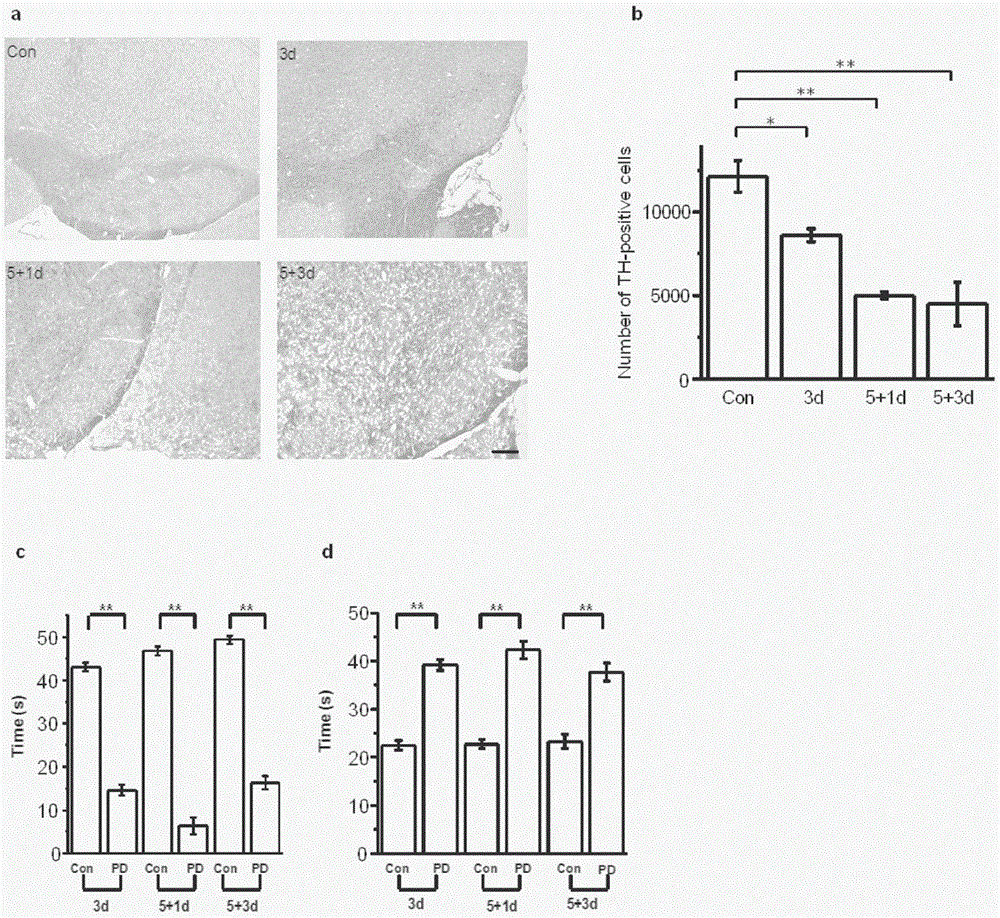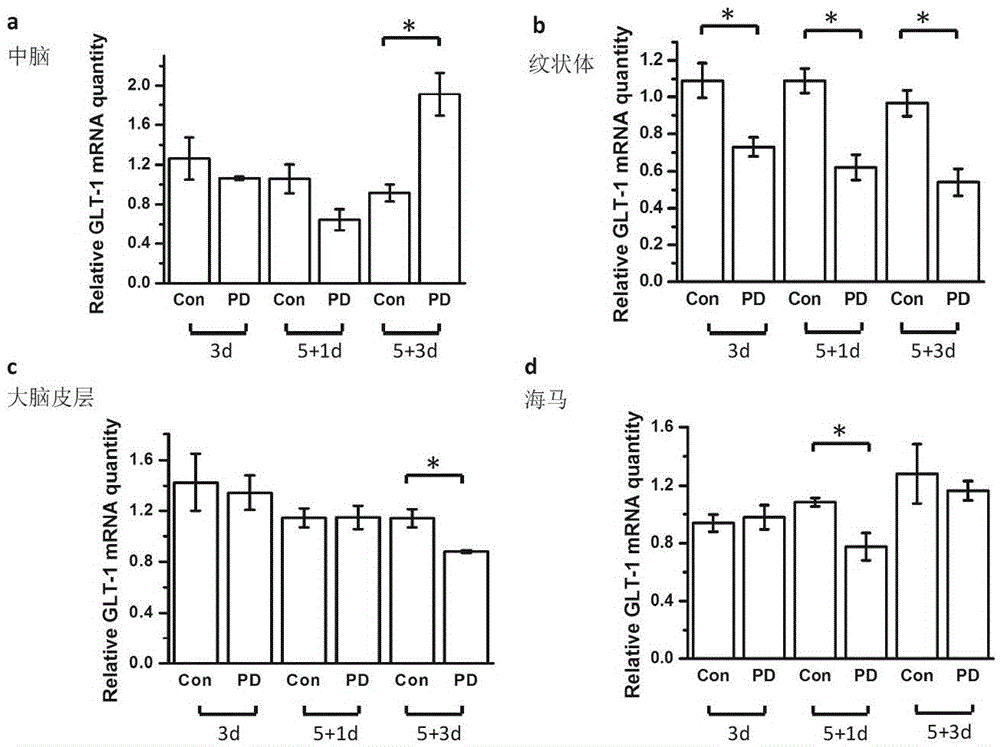Application of miRNA-543-3p in diagnosis and treatment of Parkinson's disease
A Parkinson's disease and inhibitor technology, applied in the application field of miRNA-543-3p in the diagnosis and treatment of Parkinson's disease, to achieve the effect of reducing neurotoxic effects, relieving the disease, and weakening the inhibitory effect
- Summary
- Abstract
- Description
- Claims
- Application Information
AI Technical Summary
Problems solved by technology
Method used
Image
Examples
Embodiment 1
[0048] Preparation and pathological research of embodiment 1PD mouse model
[0049] 1. Preparation and identification of PD mouse model
[0050] Preparation of PD mouse model by MPTP:
[0051] 12-week-old healthy male C57 / bl mice (body weight about 25-30g) were randomly divided into normal control group and MPTP-built PD model group. Intraperitoneal injection of MPTP20mg / kg, once a day, a total of 5 days. On the 3rd day after the injection and the 3rd day and the 5th day after the injection, the modeling was tested by animal behavior and immunohistochemical staining.
[0052] The detection content includes:
[0053] (1) Rod climbing test to detect the behavioral changes of mice.
[0054] A foam plastic ball with a diameter of 2.5 cm is fixed on the top of a wooden pole with a length of 50 cm and a thickness of 1 cm, and the wooden pole is wrapped with 2 layers of gauze to prevent slipping. Put the mouse on the top of the ball, and record the following three times: the tim...
Embodiment 2
[0072] Example 2 Screening of differentially expressed microRNAs and comparison with bioinformatics prediction results
[0073] 1. Screening and verification of differentially expressed microRNAs by high-throughput sequencing
[0074] (1) High-throughput sequencing to screen differentially expressed microRNAs
[0075] method:
[0076] Three days after the completion of modeling, the mice were sacrificed, and the brain and midbrain were separated to extract RNA from each group. The differentially expressed microRNAs of mice in each group were completed by high-throughput sequencing technology. The principle of this technology is to perform end repair on the fragments of microRNAs in the sample to be tested and connect the 5'-adapter and 3'-adapter at both ends, and perform computer detection and data processing to screen out microRNAs with significant expression differences.
[0077] 1) Selection of high-throughput sequencing: The high-throughput sequencing technology select...
Embodiment 3
[0128] Functional analysis of embodiment 3mmu-miR-543-3p
[0129] 1. Cell experiments to detect the regulatory effect of mmu-miR-543-3p on GLT-1
[0130] Overexpression of mmu-miR-543-3pmimics (SEQ ID NO: 2) and specific inhibition of mmu-miR-543-3 pinhibitors (SEQ ID NO: 3) by micro RNA analysis of microRNA for MPP + Regulation of GLT-1 expression and function on infected astrocytes. Wherein, mmu-miR-543-3pinhibitors is the antisense oligonucleotide sequence of mmu-miR-543-3p, that is, the inhibitor.
[0131] method:
[0132] 1) Culture of mouse primary astrocytes: newborn C57 / bl mice born 1 to 3 days after birth were taken out, and astrocytes were prepared and further purified and identified.
[0133] 2) Transfect normal mouse astrocytes and MPP with mmu-miR-543-3pinhibitors and mmu-miR-543-3pmimics respectively + The mouse astrocytes in the exposure group were cultured for 48 hours to detect the following indicators:
[0134] ①Using qPCR to detect the mRNA expression o...
PUM
| Property | Measurement | Unit |
|---|---|---|
| thickness | aaaaa | aaaaa |
Abstract
Description
Claims
Application Information
 Login to View More
Login to View More - R&D
- Intellectual Property
- Life Sciences
- Materials
- Tech Scout
- Unparalleled Data Quality
- Higher Quality Content
- 60% Fewer Hallucinations
Browse by: Latest US Patents, China's latest patents, Technical Efficacy Thesaurus, Application Domain, Technology Topic, Popular Technical Reports.
© 2025 PatSnap. All rights reserved.Legal|Privacy policy|Modern Slavery Act Transparency Statement|Sitemap|About US| Contact US: help@patsnap.com



